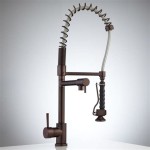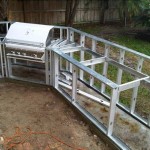Installing wood flooring in the kitchen is a great way to get a stylish, timeless look and feel. Wood floors are an investment that can last for decades, and they can make any kitchen look luxurious and inviting. But before you commit to installing wood flooring in your kitchen, it’s important to understand the types of wood available, the installation process, and the proper maintenance methods.
Types of Wood Flooring for Kitchens
When it comes to wood flooring for kitchens, there are a few different types to choose from. Solid hardwood remains the most popular option, as it provides a classic look that is timeless and easy to maintain. Engineered wood is also a popular choice for kitchens, as it is more durable and resistant to moisture than solid hardwood. Laminate is also an option, as it is more affordable than other types of flooring and is easy to install and maintain.
Installation Process
Installing wood flooring in the kitchen is a job best left to the professionals, as it can be difficult to do properly. The first step is to prepare the floor by removing any existing flooring and leveling the subfloor. Then the wood planks or tiles can be installed. It’s important to use the proper tools and techniques to ensure a secure installation. It’s also important to leave a small gap between the floor and the walls to allow for expansion and contraction.
Maintenance
To keep wood flooring in the kitchen looking its best, it’s important to follow a regular maintenance schedule. Sweeping and vacuuming the floor on a regular basis is important to remove dirt and debris that can scratch and dull the floor. It’s also important to mop the floor regularly with a wood-friendly cleaner to remove any spills or stains. It’s also a good idea to apply a wood-safe sealer or wax on a regular basis to protect the wood and make it easier to clean.









/186828472-56a49f3a5f9b58b7d0d7e142.jpg)





Related Posts








